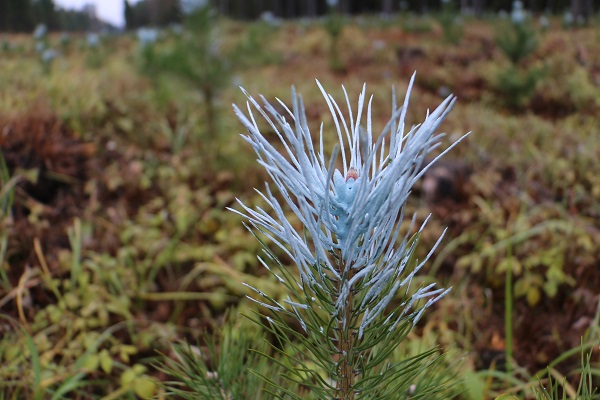LVM Protects Young Trees against Wild Animal Damage
In autumn, when the active growing season of the young trees that have been planted in the forest is over, JSC “Latvia’s State Forests” (LVM) starts protection of the young trees, especially pine trees, against damage caused by elks, roe deer and red deer in order to grow beautiful and good quality forest. During winter, buds and trunk bark of young trees serve as feed for these animals.
This year, LVM plans to protect the restored forest areas with repellents in an area of 15 191 hectares, as well as ensure the protection of young stands in an area of 3251 hectares, which is the largest planned protection territory in recent years. Depending on the height of a stand, the number of trees in the stand and the location, LVM sets the specific protection planning conditions.
Measures and types of protection of young stands vary, depending on the choice and abilities of the forest owner. For the protection of young stands LVM uses both repellents that have an unpleasant smell or taste that keeps animals away, as well as various mechanical means of protection, which serve primarily to prevent animals from reaching the protected part of the tree.
Photo: The central bud of a pine-tree covered with Wam Extra repellent
For trees of up to 1.5 metres in height, it is important to protect the central bud, because as soon as the tree top is bitten off, it is very likely that the tree will wither away and will not continue to grow. Trees of this height can be protected from cervid damage by repellents such as Cervacol Extra and Wam Extra, which are applied by hand on the tree tops, or Plantskydd and Trico, which are applied on trees using a hand sprayer.
Photo: The central bud of a pine-tree covered with Cervacol Extra repellent
In order to provide even protection for trees of different heights above 1.5 metres, it is necessary to protect both the central shoot buds and the trunks of the tallest trees. There are no longer any needles at some places on the trunk of the tree and therefore cervids get more interested in bark and side shoots rather than the central bud. The most suitable repellents for this type of protection are those applied by hand sprays.
Photo: A pine-tree treated with Plantskydd repellent
Days when the outside temperature is well above 0 °C and the trees are dry are the most suitable time for the application of plant protection products. When used in such conditions, the repellents manage to dry after application and are able to perform their function throughout the winter. It must be taken into account that after application of the product, it should not rain for at least two hours in order to allow the applied protective agent to dry completely. Failure to comply with this condition will prevent the repellent from drying and it will run down, thus not providing an adequate level of protection.
Photo: A pine-tree treated with Trico repellent
In LVM young forest stands with an average height above 2 meters the target or future trees are protected with spiral tree wraps or using Trico repellent by spraying it onto the tree trunk between the whorls.
All plant protection products are used in the young forest stands for several years in a row, thus protecting trees from damage and biting.








